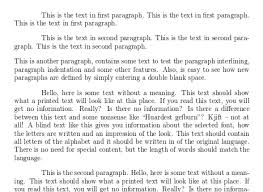记忆方法
将“paragraph”分解为“para”和“graph”,想象“para”代表一段距离(或一个段落),而“graph”是图表或记录,结合起来就像是在一段距离内记录下来的内容,即一段文字。这样的联想可以帮助记忆“paragraph”表示“段落”的意思。
以上内容由AI生成, 仅供参考和借鉴
中文词源
paragraph 段落,分段符号
para-,在旁,在周围,-graph,写。即在旁边写的,写在旁边的,引申词义分段符号,段落。
英语词源
- paragraph (n.)
- late 15c., from Middle French paragraphe "division of text" (13c., Old French paragrafe), from Medieval Latin paragraphus "sign for start of a new section of discourse" (the sign looked something like a stylized letter -P-), from Greek paragraphos "short stroke in the margin marking a break in sense," also "a passage so marked," literally "anything written beside," from paragraphein "write by the side," from para- "beside" (see para- (1)) + graphein "to write" (see -graphy).
权威例句
- 1. Look at the information that precedes the paragraph in question.
- 查看正在讨论的这段文字前面的信息。
- 2. The length of a paragraph depends on the information it conveys.
- 段落的长度取决于它所传达的信息。
- 3. The second paragraph startled me even more than the first.
- 第二段比第一段更让我吃惊。
- 4. The critic's review of the play was just a paragraph of bile.
- 那位批评家对这部戏剧的评论不过是在发泄怒气。
- 5. The first line of each paragraph should be indented.
- 每段的第一行应缩格。
